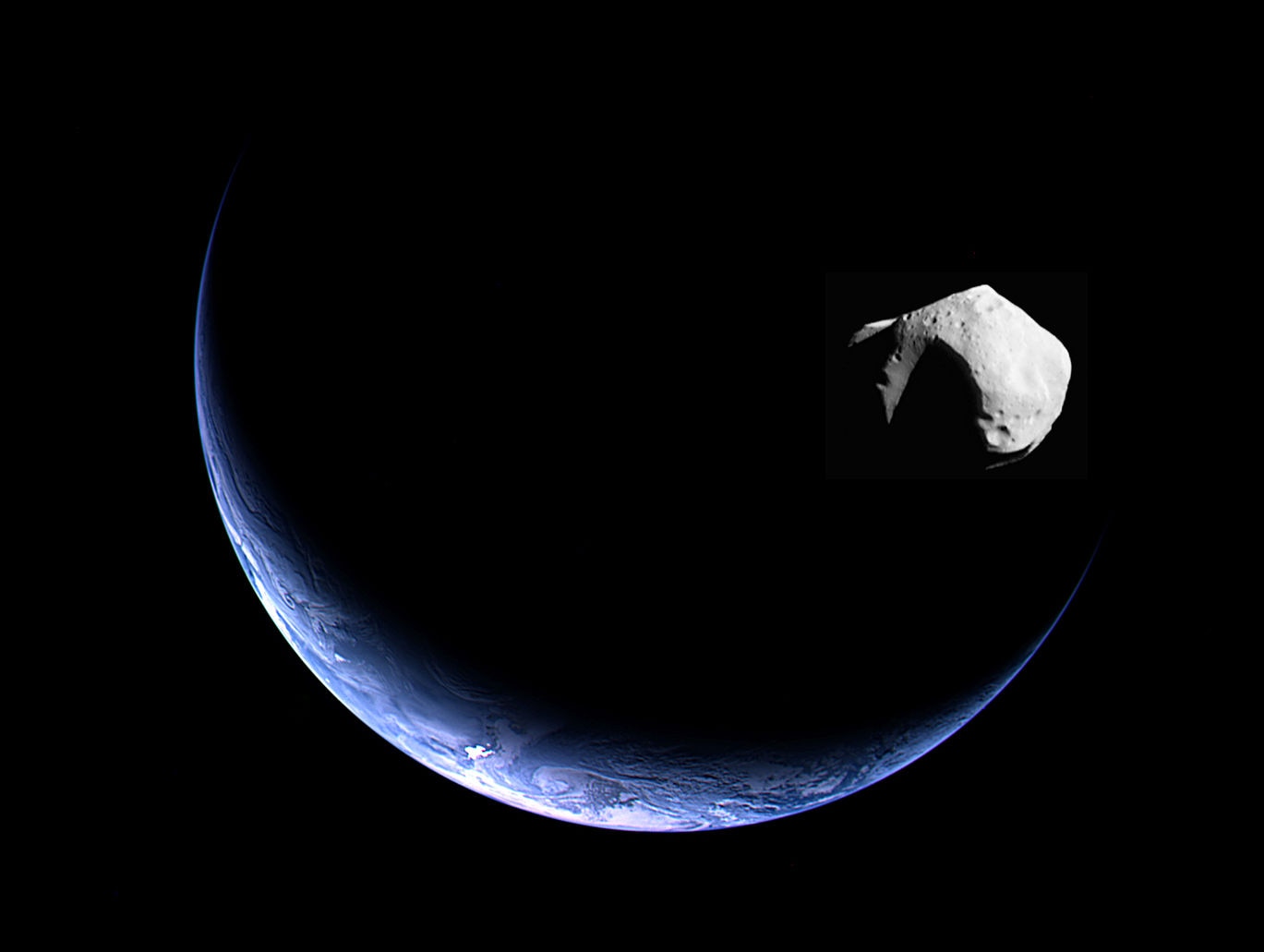A near-Earth asteroid may actually be a chunk of the Moon blasted into orbit!
A quasi-satellite follows Earth around the Sun.

An asteroid a bit longer than a basketball court is following Earth around the Sun, and new research shows it may be a chunk of the Moon blasted off into space by a giant impact.
The asteroid is called (469219) Kamo'oalewa 2016 HO3. It's a quasi-satellite of Earth, meaning its orbit is very similar to our home planet's so it appears to follow Earth around the Sun. It doesn't really orbit the Earth like the Moon does — it orbits the Sun, just like Earth does — but from certain frames of reference it appears to.
Here's a video of the motion of Kamo'oalewa and Earth around the Sun, where we follow the Earth so it appears nearly motionless. As you can see, it looks like Kamo'oalewa goes around the Earth, but that's an illusion.
The name "Kamo'oalewa" is Hawaiian for "celestial body that oscillates," which is perfect, since that's what it appears to do, and it was discovered using the PAN-STARRS telescope which is in Hawaii.
A handful of quasi-satellites are known, and there are likely quite a few more of them out there. They tend to be small and faint, and their orbital geometry generally makes them hard to observe except for certain short windows of time one or twice per year, so we don't know how big a population of them there is.
Kamo'oalewa is about 40 meters across and never gets closer to us than about 5 million kilometers (and generally more like 10 million), so it's not a threat to us. Its orbit is remarkably Earth-like, though, with almost exactly the same average distance to the Sun and an orbital period (its "year") of 365.9657 days; just a few hours longer than Earth's. The big difference is that its orbit is tipped relative to ours by about 8°.
Is this a coincidence? Where these rocks come from is a big question. It's possible they come from the main asteroid belt and gravitational interactions with Earth and the Moon altered their orbits to be more like ours. However, most captured near-Earth asteroids don't have such Earth-like orbits, so that seems unlikely.
To try to find out more, a team of astronomers observed Kamo'oalewa using the Large Binocular Telescope in Chile and the Lowell Discovery Telescope in Arizona. They took images and spectra to see if they could determine its physical characteristics, including what it's made of.
Its brightness is variable, going up and down by a factor of more than 2 every 28.3 minutes. That's how long it takes to spin once (its "day"), and it's elongated like a russet potato, so that when we see it broadside it looks brighter and when we see it end on it looks fainter. That rapid spin means it's also likely to be a more-or-less solid piece of rock and not a rubble pile (a loosely assembled collection of rocks); it needs some internal cohesion to hold itself together over the centrifugal force outward.
They also projected its orbit into the past and future and found it's relatively stable over the past 100 years and likely 300 years into the future (extrapolating farther runs into issues with uncertainties in the orbit now). So it's been hanging out with us for a while.
But more interesting are the spectra. These are observations where the light from the object is broken up into individual colors, allowing astronomers to determine what the mineral and elemental composition is. They found Kamo'oalewa is made up of silicates (rocky material) and also pyroxene and olivine. While these are common in asteroids, the relative amounts don't match well with the amounts in other asteroids. Also, Kamo'oalewa is quite red, and that doesn't match asteroids well either.
Surprisingly, a far better match is found with rocks from the Moon. They examined spectra from several rocks brought back by Apollo 14 astronauts and while they're not perfect fits, they do work a lot better than those from asteroids.
That actually makes sense. The Moon sometimes suffers big asteroid impacts, and these can launch debris off the surface and into space, where it could orbit the Sun. The orbit would very likely be similar to the Earth's in that case.
So Kamo'oalewa may be a chunk of the Moon! That's cool. It's not clinched, though. For example, there are gravitationally stable points along the Earth's orbit around the Sun called Lagrange points where material can collect. Over long periods of time they can wander out of these points into orbits like that of Kamo'oalewa, so it's possible that's where it came from. However, the 8° inclination of its orbit makes me think that's unlikely; if it originated in a Lagrange point I'd expect it to have the same orbital tilt around the Sun as Earth does.
The astronomers note that the near-Earth asteroids 2020 PN1, 2020 PP1, and 2020 KZ2 all have very similar orbits to Kamo'oalewa, so they may have come from the same lunar impact event or could even have all once been part of a parent body that broke up.
At the moment we don't know. However, there's a possibly very interesting future for us and these rocks. Because their orbits are so similar to Earth's, they're relatively easy to send missions to (it doesn't take a huge amount of fuel to get to them). I'd love to see a spacecraft sent to them to orbit, map, and maybe even sample them to send to Earth so scientists can examine them in the lab. The Moon itself formed after a giant impact on Earth, and if these asteroids came from the Moon, then getting samples back here would be a poetic journey back home.






























